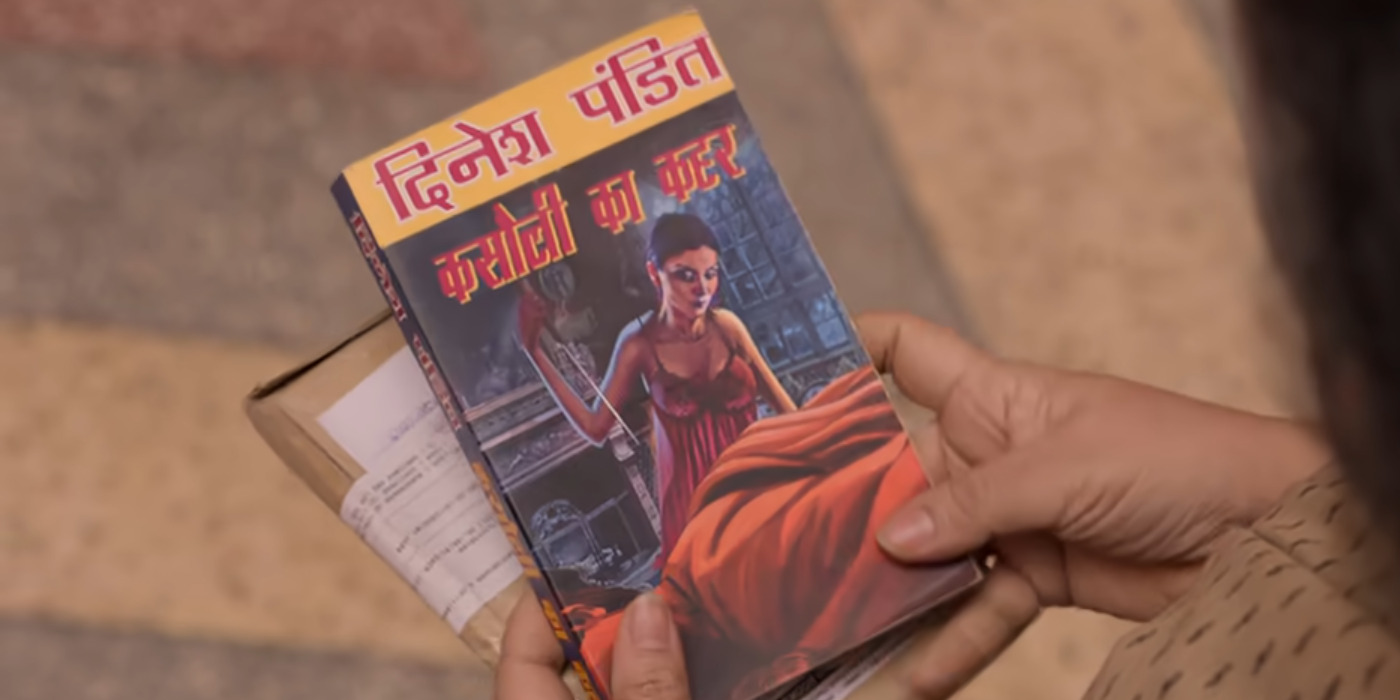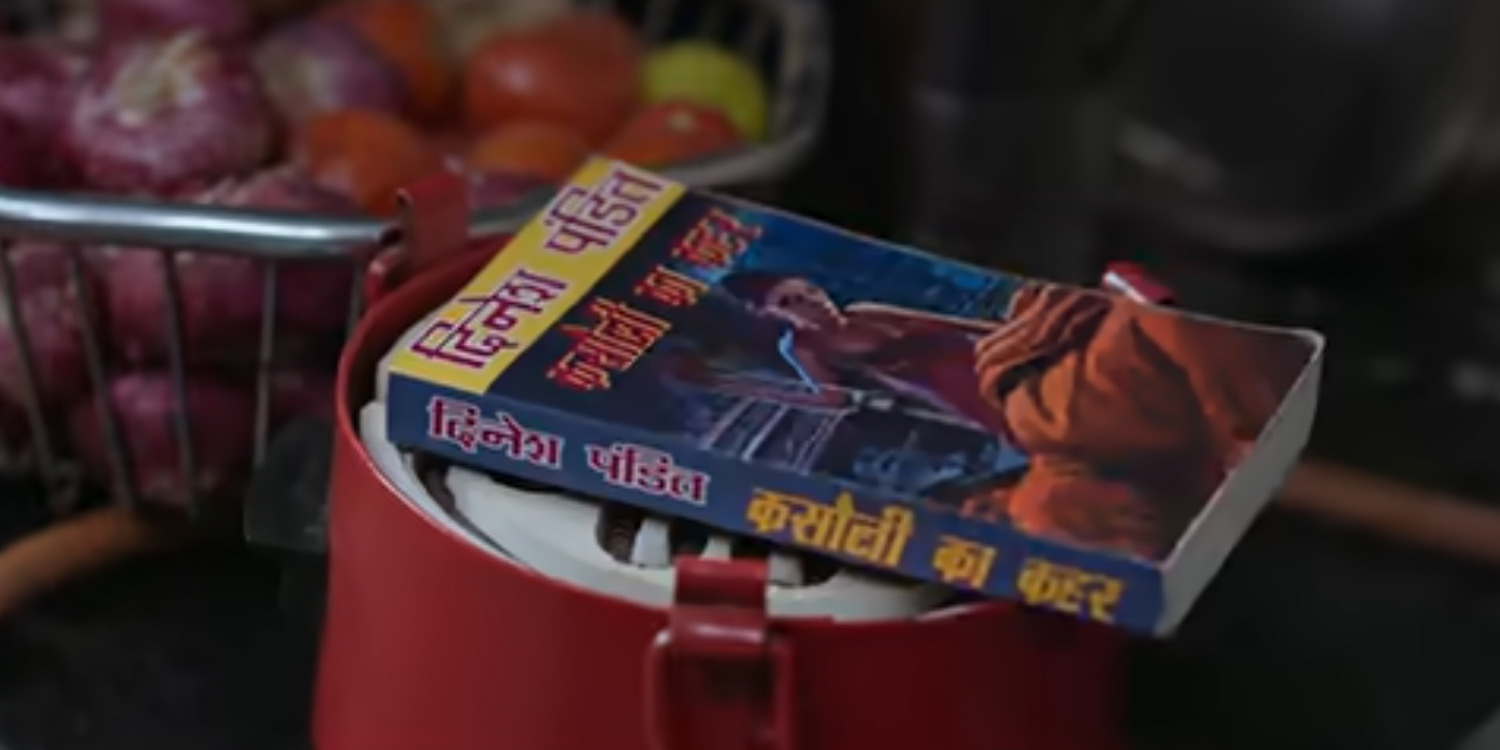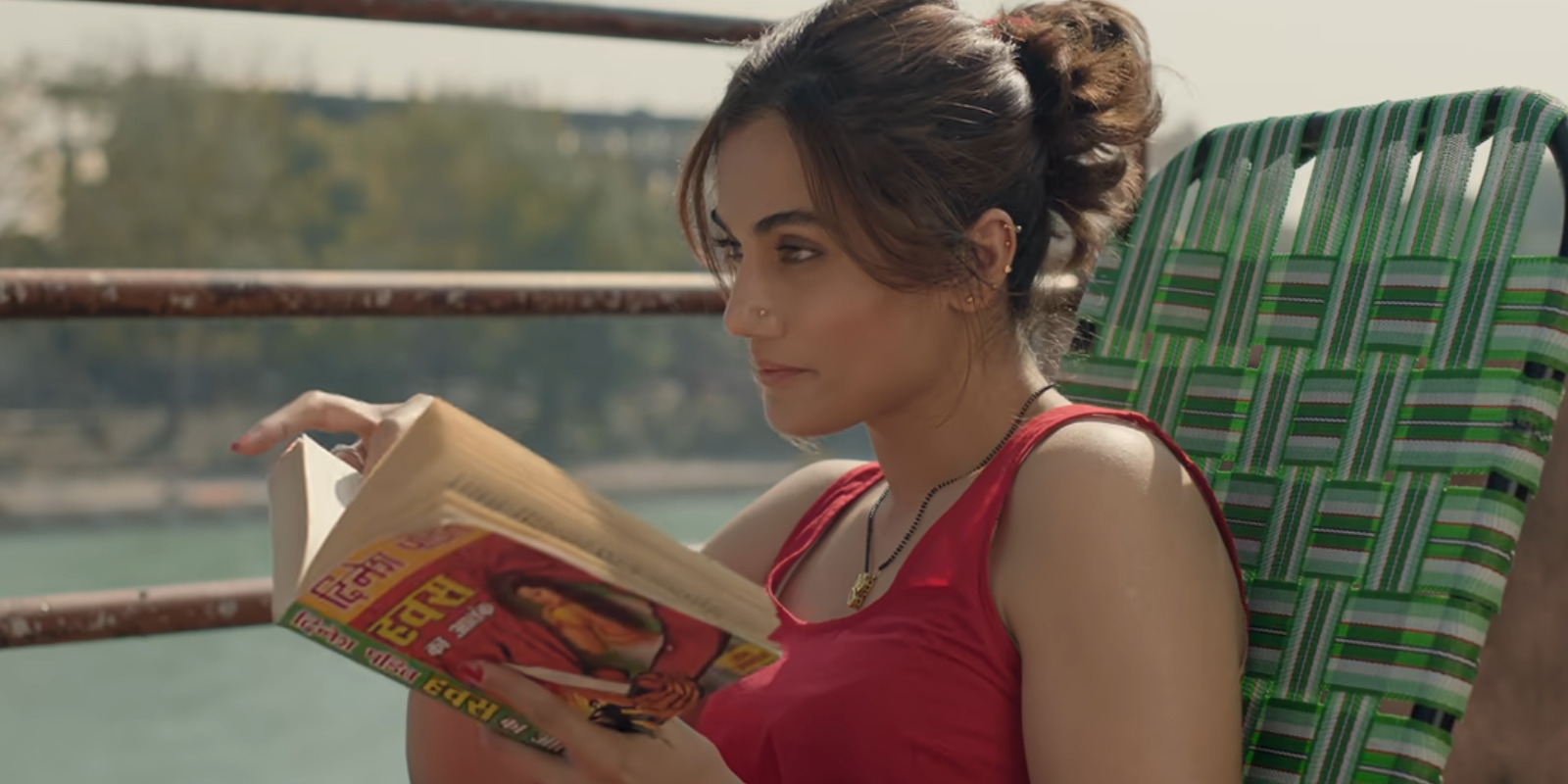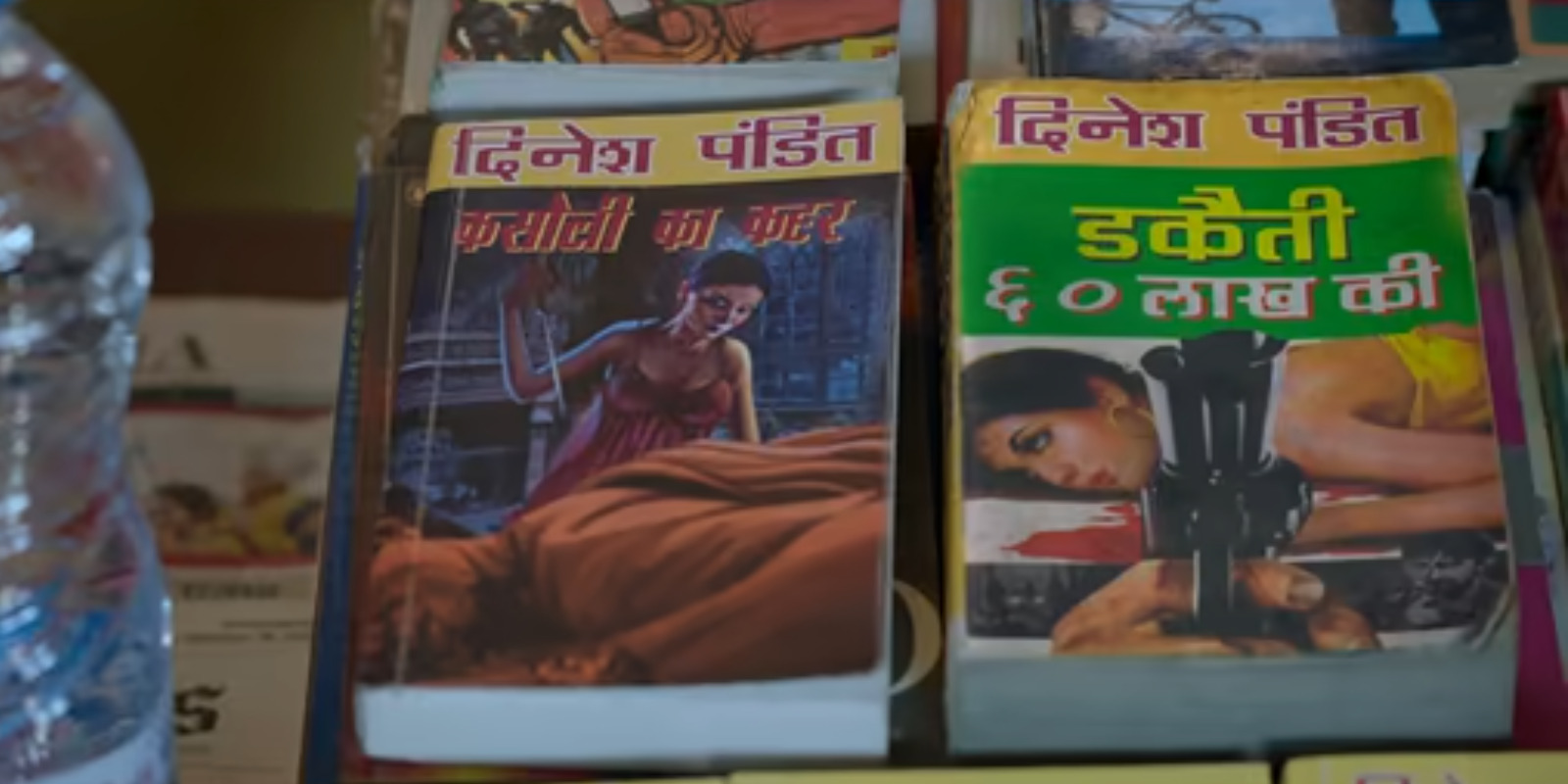In Haseen Dillruba and its sequel Phir Aayi Hasseen Dillruba, Dinesh Pandit, an author who has written many lurid Hindi crime novels, plays a significant role, although he has never been seen on screen. The lead character, Rani Kashyap, is a huge fan of Pandit’s novels and often refers to his poetic quotes on love and life. Hence, this fixation comes in handy when she is investigated for the murder of her husband in the small town of Jwalapur.
Likewise, in the second film, Pandit’s novels and his life lessons become an integral part of Rani’s story as she continues to run from the law and finds herself caught in yet another dangerously passionate love triangle. With several of the author’s titles – notably Hawas ka Aatang, Cobra ka Intiqam and Magarmach ka Shikanja – becoming relevant to her story, fans are forced to wonder about the existence of these novels in reality. SPOILER ALERT!
The fictionality of Dinesh Pandit’s crime novels
Screenwriter Kanika Dhillon penned the screenplays for “Haseen Dillruba” and “Phir Aayi Hasseen Dillruba,” creating the fictional worlds of both films. Dinesh Pandit, the famous author of lurid crime novels, is the central driving force in the author’s film world, as his novels drive the instrumental plots of several characters and their mysterious crimes. Although the author remains a fairly well-known name in these films, Dinesh Pandit is not a real person, but another fictional element in Dhillon’s universe.
Originally, Pandit was a fictional reference to the real-life Hindi pulp fiction writers who were popular in the past – from the 1960s to the 1990s. Authors like Gulshan Nanda, Ved Prakash Sharma and Surendra Mohan Pathak remain some of the most famous names in the pulp fiction genre and have hundreds of books in their bibliography. These writers also had countless fans who loved their works, which ranged from detective stories to romance novels full of cliches and crime novels like the ones Pandit wrote on screen.
Therefore, Pandit’s character remains an ode to the genre of Hindi pulp fiction novels that has been marginalized over the generations. Dhillon confirmed this in an interview with OTTplay where she said, “I have read these Hindi pulp crime novels. And here Dinesh Pandit is my homage to this fantastical world of Hindi pulp crime novels that these writers have written.” Therefore, Dinesh Pandit and his novels remain works of fiction confined to the narratives of the films.
Hawas ka Aatang is used to indicate the relationship between Rani and Neel
Hawas ka Aatang is one of the books that plays an important role in ‘Haseen Dillruba’ during the early phase of Rani’s acquaintance with Neel. At this point in the story, the woman’s marriage with her husband Rishu has turned out to be a failed venture in the spouses’ lives. After the initial failure of attempts to build a relationship with Rani, Rishu gives her the cold shoulder and ignores her at every opportunity. Due to the same reason, Rani’s boredom paves the way for an instant spark when Neel, Rishu’s cousin, arrives to stay at his place for a while.
During one of the earlier occasions when Rani and Neel meet on the balconies of the house, the former can be seen reading Hawas Ka Aatang as the couple ventures into a dangerous flirtation. The title of the book roughly translates to ‘The Terror of Lust’, which seems to be an obvious allusion to the risky nature of the sexual attraction that develops between Rani and Neel. Considering the consequences that will ensue if they give in to their lust, it is obvious that the Pandit novel that features in their earlier interaction is a precursor to this.
Cobra ka Intiqam and Magarmach ka Shikanja: Narrative Catalysts
Unlike Hawas ka Aatang, Dinesh Pandit’s prominently featured books from ‘Phir Aayi Hasseen Dillruba’ are much more directly tied into the film’s plot. In the previous film, Rani and Rishu use the plot of the book Kasauli ka Kehar to cover up Neel’s murder and evade the law. Similarly, Abhimanyu – a new pivotal addition in the sequel – uses another novel by Pandit, Cobra ka Intiqam (The Revenge of the Cobra), to set up the death of his family when he was in his early 20s. Therefore, the book’s main role in the story is to establish Abhimanyu’s close resemblance to the existing protagonists.
Similarly, the last Pandit book revealed in the film, Magarmach ka Shikanja (Crocodile’s Clutch), becomes the blueprint that Rani, Rishu and Abhimanyu follow to evade the official investigation of Officer Montu. Moreover, the book’s plot – and subsequently the characters’ narrative – also serves as a reference to the 1988 film ‘Khoon Bhari Maang’, which features crocodiles as important plot elements. Ultimately, both books are as fictional as Dinesh Pandit and his other works, but play a much more important role in the film’s plot.
Read more: Ripley: Is “My Atrani” a real book?




